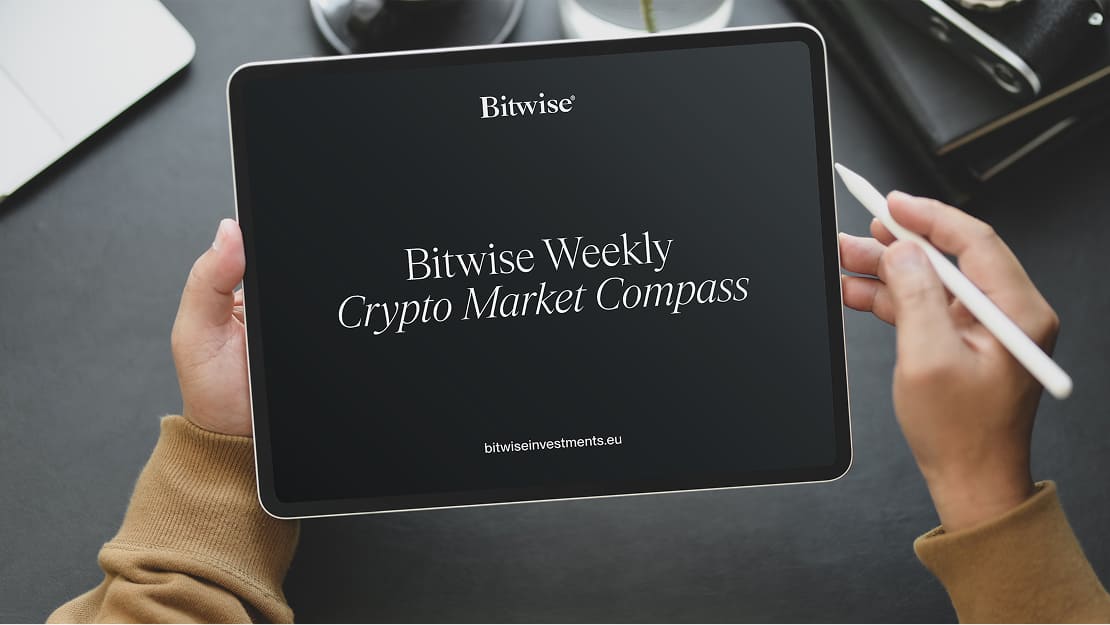- Last week, cryptoassets underperformed traditional assets due to increased risk aversion in bitcoin and crypto markets.
- Our in-house Cryptoasset Sentiment Index declined to the lowest level since April 2025 underscoring the decline in overall market sentiment. The recent outperformance of ethereum and other altcoins vis-à-vis bitcoin also reversed.
- Chart of the Week: Net revisions to non-farm payrolls over the past 2 months alone has already been -258k jobs – the highest level of net revisions since Covid which tends to spell trouble for the US labour market and overall US economy.
Chart of the Week
Net Revisions to Non-Farm Payrolls
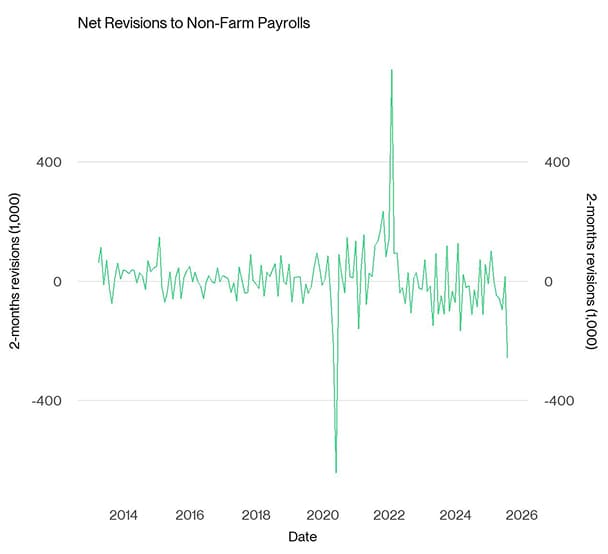 Source: Bloomberg, Bitwise Europe
Source: Bloomberg, Bitwise Europe
Performance
Last week, cryptoassets underperformed traditional assets due to increased risk aversion in bitcoin and crypto markets.
In fact, our in-house Cryptoasset Sentiment Index declined to the lowest level since April 2025 underscoring the decline in overall market sentiment. The recent outperformance of ethereum and other altcoins vis-à-vis bitcoin also reversed.
One of the key negative catalysts appeared to be the non-farm payrolls report in the US which showed that the US economy only added +73k new jobs in July – significantly lower than the median consensus estimate of +104k jobs.
What is more is that previous months experienced significant downward revisions: The initial release in June of 147k jobs was revised to 14k and the initial release in May of 139k jobs was revised lower to only 19k jobs.
In fact, the net revisions to non-farm payrolls over the past 2 months alone has already been -258k jobs – the highest level of net revisions since Covid which tends to spell trouble for the US labour market and overall US economy (Chart-of-the-Week).
The July report was also relatively weak:
- Second straight month that residential construction jobs ticked down (leading employment indicator)
- Manufacturing job losses piling up with negative revisions.
- Ex-education and health care the economy lost jobs in July.
As a result, Fed rate cut odds for September 2025 jumped above 50% again – at the time of writing this report, Fed rate cut odds are at 86% according to Fed Funds Futures data.
It is important to highlight that most of the remaining job gains are due to payroll growth in government and quasi-government jobs (education & health care) which is growing at 1.8%. Meanwhile, ‘private sector' jobs are only growing at 0.3%. However, the latter part accounts for 68% of overall payrolls.
This split is textbook late-cycle labour market dynamics.
Government data have generally been under increasing scrutiny by investors due to unusually high (downward) revisions. In particular, non-farm payrolls are subject to significant revisions due to very low response rates by surveyed establishments (below 50%) since Covid. That means that a large part of payroll growth is actually estimated by the BLS itself.
What is even more is that the employment-to-population ratio ticked significantly lower implying significant weakness in the US labour market. It is quite likely that the U3 unemployment rate will continue to trend higher which is also suggested by the Conference Board consumer survey spread between “jobs plentiful” and “jobs hard to get” – an increasing share of surveyed consumers is reporting a deterioration in labour market conditions, something which is corroborated in other consumer surveys as well (e.g. University of Michigan employment prospects).
Meanwhile, real-time data for overall job openings such as the LinkUp 10,000 index have reached new cycle lows as the aggregate number of job cut announcements implied by the Challenger, Gray & Christmas survey year-to-date in 2025 has reached the highest level since Covid.
That means that an increasing number of layoffs is facing a declining number of job openings which is bound to lead to higher unemployment.
Overall, we think that the market is somewhat misjudging the weakness in US labour market indicators in the short term as increasing Fed rate cut odds potentially accelerate US liquidity growth which would be a significant tailwind for bitcoin and other cryptoassets.
In addition, low sentiment readings are already creating an increasingly attractive risk/reward opportunity for investors especially considering the recent publication of the White House digital asset report. (Here is an excellent summary of the report in case you want to get the key takeaways).
Cross Asset Performance (Week-to-Date)
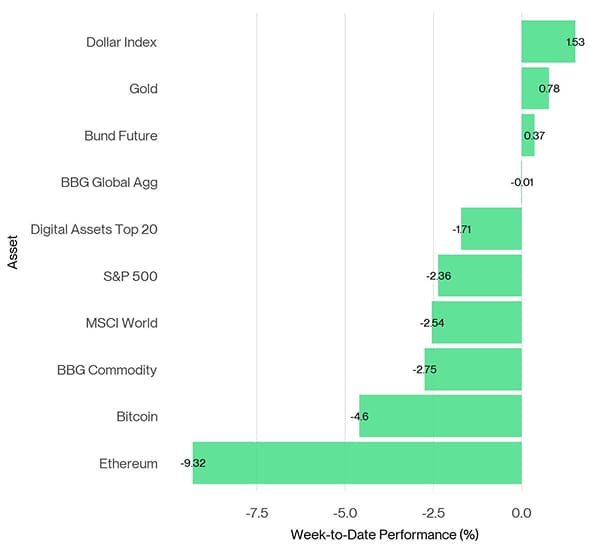 Source: Bloomberg, Coinmarketcap; performances in USD exept Bund Future
Top 10 Cryptoasset Performance (Week-to-Date)
Source: Bloomberg, Coinmarketcap; performances in USD exept Bund Future
Top 10 Cryptoasset Performance (Week-to-Date)
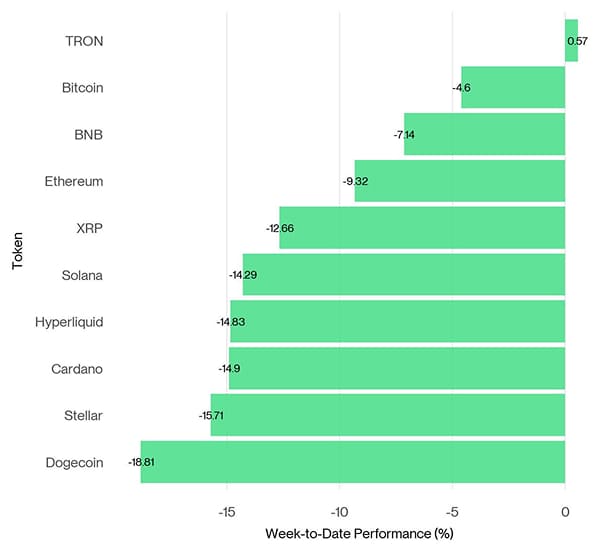 Source: Coinmarketcap
Source: Coinmarketcap
In general, among the top 10 crypto assets TRON, Bitcoin, and BNB were the relative outperformers.
Overall altcoin outperformance vis-à-vis bitcoin decelerated last week, with only 5% of our tracked altcoins managing to outperform bitcoin on a weekly basis. Ethereum also underperformed bitcoin last week.
Sentiment
Our in-house “Cryptoasset Sentiment Index” has declined to the lowest level since April 2025.
At the moment, 5 out of 15 indicators are above their short-term trend.
Crypto dispersion and BTC exchange inflows were two indicators that posted positive developments week on week.
The Crypto Fear & Greed Index currently signals "Greed" levels as of this morning, having briefly touched "Neutral" on August 3rd before reverting to the lower bound of the greed range.
Performance dispersion among cryptoassets while stable through last week but ended slightly higher at 0.52, signalling that altcoins have continued to be highly correlated with the performance of bitcoin.
Altcoin outperformance vis-à-vis Bitcoin has decreased from last week, with around 5% of our tracked altcoins managing to outperform Bitcoin on a weekly basis. Ethereum also managed to underperform Bitcoin last week.
In general, increasing (decreasing) altcoin outperformance tends to be a sign of increasing (decreasing) risk appetite within cryptoasset markets and the latest altcoin outperformance signals a increasing risk appetite at the moment.
Sentiment in traditional financial markets as measured by our in-house measure of Cross Asset Risk Appetite (CARA) has also decreased dramatically, moving from 0.67 to 0.27.
Fund Flows
Weekly fund flows into global crypto ETPs have accelerated from last week.
Global crypto ETPs saw around + 844.9 mn USD in weekly net inflows across all types of cryptoassets, after +213.4 mn USD in net inflows the previous week.
Global Bitcoin ETPs have experienced net inflows totalling +786.7 mn USD last week, of which -643.0 mn USD in net outflows were related to US spot Bitcoin ETFs.
The Bitwise Bitcoin ETF (BITB) in the US experienced net outflows, totalling -66.6 mn USD last week.
In Europe, the Bitwise Physical Bitcoin ETP (BTCE) experienced minor net outflows equivalent to -7.9 mn USD, while the Bitwise Core Bitcoin ETP (BTC1) experienced minor net inflows of +0.5 mn USD.
The Grayscale Bitcoin Trust (GBTC) has posted net outflows of -124.9 mn USD. The iShares Bitcoin Trust (IBIT), experienced net inflows of around +355.3 mn USD last week.
Meanwhile, flows into global Ethereum ETPs,however, decelerated last week, with around +68.8 mn USD in net inflows.
US spot Ethereum ETFs, also recorded net inflows of around +154.3 mn USD on aggregate. The Grayscale Ethereum Trust (ETHE), has posted net outflows of -53.8 mn USD.
The Bitwise Ethereum ETF (ETHW) in the US has posted also net outflows of -40.3 mn USD.
In Europe, the Bitwise Physical Ethereum ETP (ZETH) saw minor net outflows of -2.1 mn USD while the Bitwise Ethereum Staking ETP (ET32) saw significant net outflows of -31.1 mn USD.
Altcoin ETPs ex Ethereum, however, experienced net inflows of +23.3 mn USD last week.
Yet, thematic & basket crypto ETPs continued to be out of favour with net outflows of around -33.9 mn USD on aggregate last week. The Bitwise MSCI Digital Assets Select 20 ETP (DA20) has posted net inflows of around +1.7 mn USD.
Global crypto hedge funds exposure to Bitcoin has decreased significantly last week. The 20-days rolling beta of global crypto hedge funds' performance to Bitcoin increased to around 037 per yesterday's close, down from 0.51 from the week before.
On-Chain Data
Last week, Bitcoin's on-chain activity reflected the underperformance of the crypto markets against traditional assets due to increased risk aversion.
Net buying volumes on bitcoin spot exchanges over the past 7 days continued to be negative and accelerate with net selling volumes increasing to approximately -$1.54 bn on bitcoin spot exchanges.
Furthermore, the 30-day "apparent demand" metric for Bitcoin continues to register positive readings, though it has decelerated markedly over the past week, suggesting a potential cooling in short-term holder accumulation activity.
Furthermore, Bitcoin whale activity has shifted notably, with large holders now demonstrating net inflows to exchanges, indicating distribution. Specifically, whale addresses deposited a net 16,407 BTC to exchanges over the past week, signalling decreased accumulation appetite among major holders.
Heightened risk aversion across both crypto and traditional markets drove significant selling pressure on Bitcoin amid a broader flight from risk assets. Our Cross Asset Risk Appetite (CARA) measure plummeted from 0.67 to 0.27, underscoring the dramatic shift in sentiment that caused cryptoassets to underperform traditional assets. This risk-off environment also saw the recent outperformance of ethereum and other altcoins versus bitcoin reverse course.
Nonetheless, based on recent data from Glassnode, the overall downward trend in exchange-held Bitcoin reserves remains intact. The current level stands at 2.882 mn BTC, representing approximately 14.5% of the total circulating supply.
Futures, Options & Perpetuals
Last week, BTC futures open interest decreased last week by -4.1k BTC across all exchanges, and decreased by -3.2k BTC on CME. Meanwhile, perpetual open interest decreased by around -4.9k BTC.
BTC perpetual funding rates remained positive but trended downward last week indicating a bearish sentiment among traders in the perpetual futures market and a short bias.
In general, when the funding rate is positive (negative), long (short) positions periodically pay short (long) positions, which is indicative of bullish (bearish) sentiment.
The BTC 3-months annualised basis decreased last week to around 6.9% p.a., averaged across various futures exchanges.
BTC option open interest increased by around +1.1k BTC while the put-call open interest ratio decreased sharply to 0.56.
Meanwhile, the 1-month 25-delta skew for BTC increased throughout the week from +3.7% to +5.9% signalling decreasing appetite for call options. The presence of a positive skew indicates some preference for downside protection.
BTC option implied volatilities decreased slightly compared to last week, while the 1-month realized volatility also ticked higher at around 30.8% p.a.
At the time of writing, implied volatilities of 1-month ATM Bitcoin options are currently at around 36.3% p.a. on Deribit.
Bottom Line
- Last week, cryptoassets underperformed traditional assets due to increased risk aversion in bitcoin and crypto markets.
- Our in-house Cryptoasset Sentiment Index declined to the lowest level since April 2025 underscoring the decline in overall market sentiment. The recent outperformance of ethereum and other altcoins vis-à-vis bitcoin also reversed.
- Chart of the Week: Net revisions to non-farm payrolls over the past 2 months alone has already been -258k jobs – the highest level of net revisions since Covid which tends to spell trouble for the US labour market and overall US economy.
Appendix
Bitcoin Price vs Cryptoasset Sentiment Index
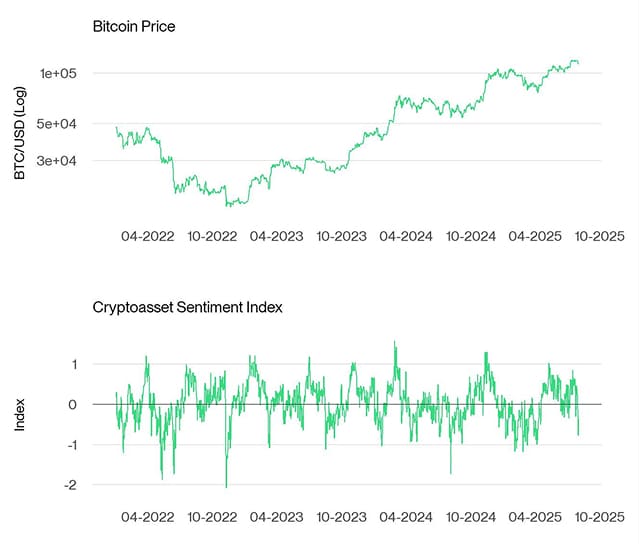 Source: Bloomberg, Coinmarketcap, Glassnode, NilssonHedge, alternative.me, Bitwise Europe
Cryptoasset Sentiment Index
Source: Bloomberg, Coinmarketcap, Glassnode, NilssonHedge, alternative.me, Bitwise Europe
Cryptoasset Sentiment Index
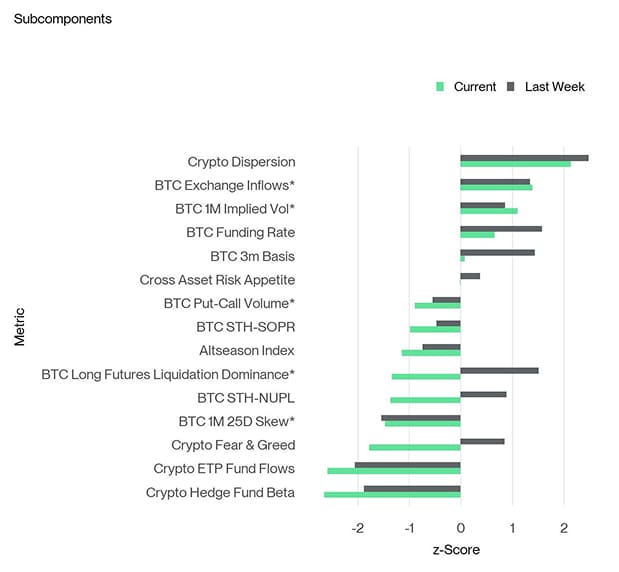 Source: Bloomberg, Coinmarketcap, Glassnode, NilssonHedge, alternative.me, Bitwise Europe; *multiplied by (-1)
Cryptoasset Sentiment Index
Source: Bloomberg, Coinmarketcap, Glassnode, NilssonHedge, alternative.me, Bitwise Europe; *multiplied by (-1)
Cryptoasset Sentiment Index
 Source: Bloomberg, Coinmarketcap, Glassnode, NilssonHedge, alternative.me, Bitwise Europe
TradFi Sentiment Indicators
Source: Bloomberg, Coinmarketcap, Glassnode, NilssonHedge, alternative.me, Bitwise Europe
TradFi Sentiment Indicators
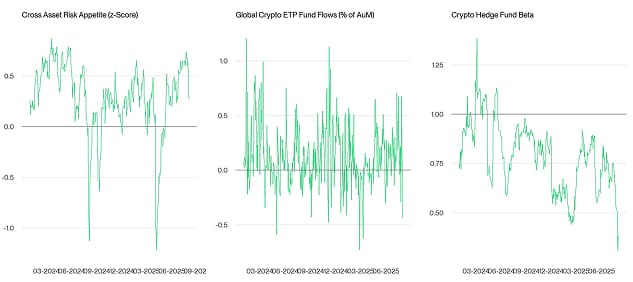 Source: Bloomberg, NilssonHedge, Bitwise Europe
Crypto Sentiment Indicators
Source: Bloomberg, NilssonHedge, Bitwise Europe
Crypto Sentiment Indicators
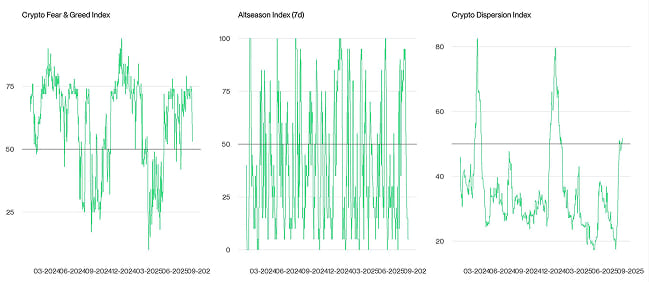 Source: Coinmarketcap, alternative.me, Bitwise Europe
Crypto Options' Sentiment Indicators
Source: Coinmarketcap, alternative.me, Bitwise Europe
Crypto Options' Sentiment Indicators
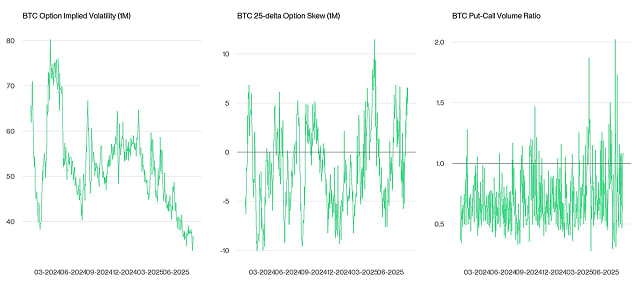 Source: Glassnode, Bitwise Europe
Crypto Futures & Perpetuals' Sentiment Indicators
Source: Glassnode, Bitwise Europe
Crypto Futures & Perpetuals' Sentiment Indicators
 Source: Glassnode, Bitwise Europe; *Inverted
Crypto On-Chain Indicators
Source: Glassnode, Bitwise Europe; *Inverted
Crypto On-Chain Indicators
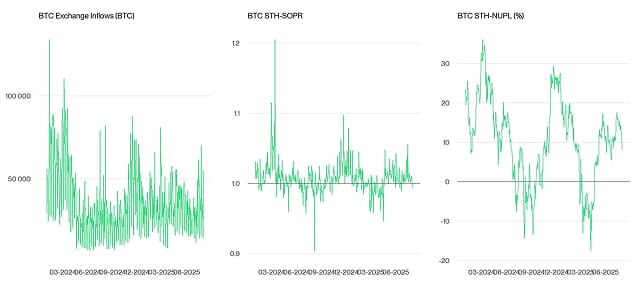 Source: Glassnode, Bitwise Europe
Bitcoin vs Crypto Fear & Greed Index
Source: Glassnode, Bitwise Europe
Bitcoin vs Crypto Fear & Greed Index
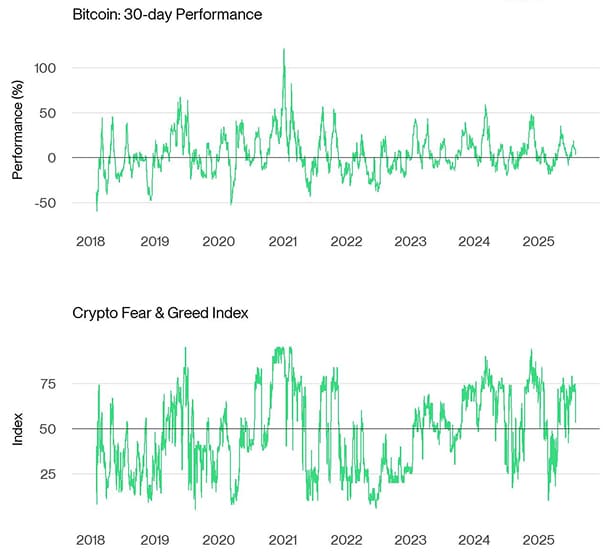 Source: alternative.me, Coinmarketcap, Bitwise Europe
Bitcoin vs Global Crypto ETP Fund Flows
Source: alternative.me, Coinmarketcap, Bitwise Europe
Bitcoin vs Global Crypto ETP Fund Flows
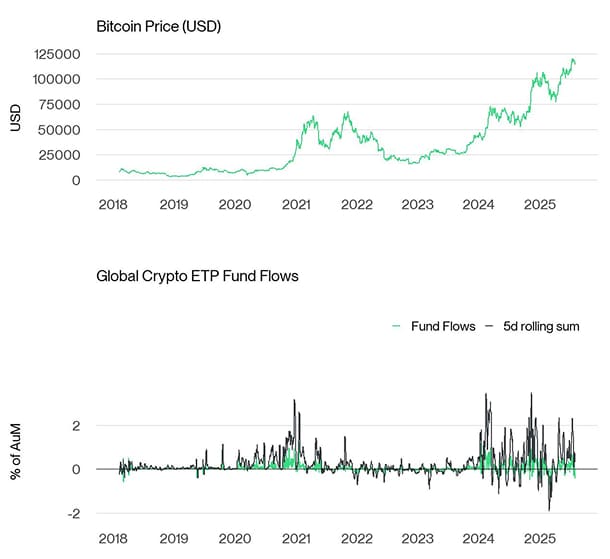 Source: Bloomberg, Bitwise Europe; ETPs only, data subject to change
Global Crypto ETP Fund Flows
Source: Bloomberg, Bitwise Europe; ETPs only, data subject to change
Global Crypto ETP Fund Flows
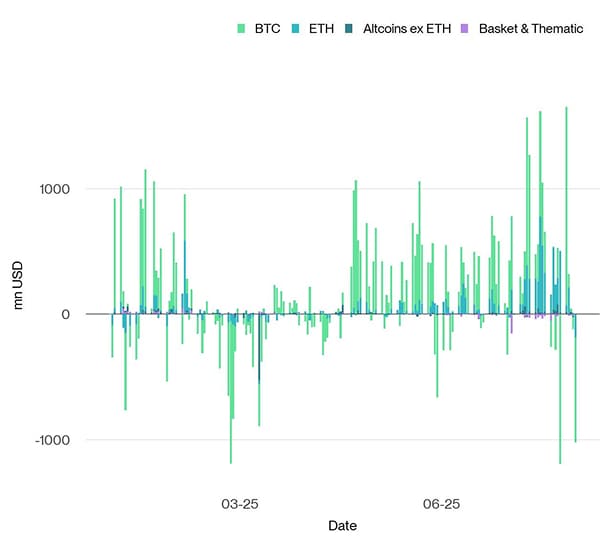 Source: Bloomberg, Bitwise Europe; ETPs only; data subject to change
US Spot Bitcoin ETF Fund Flows
Source: Bloomberg, Bitwise Europe; ETPs only; data subject to change
US Spot Bitcoin ETF Fund Flows
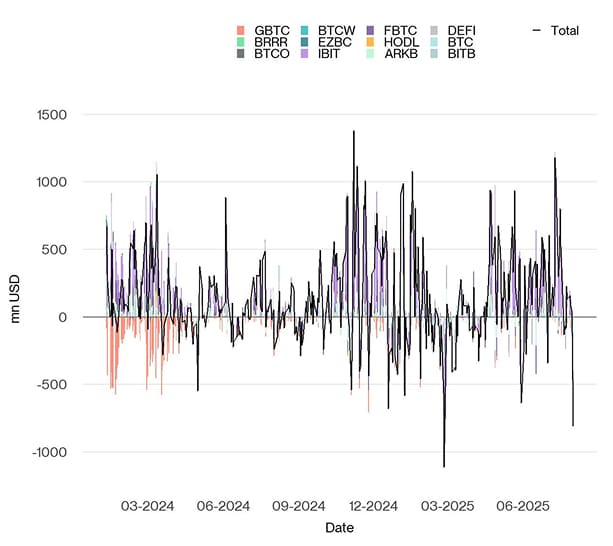 Source: Bloomberg, Bitwise Europe; data subject to change
US Spot Bitcoin ETFs: Flows since launch
Source: Bloomberg, Bitwise Europe; data subject to change
US Spot Bitcoin ETFs: Flows since launch
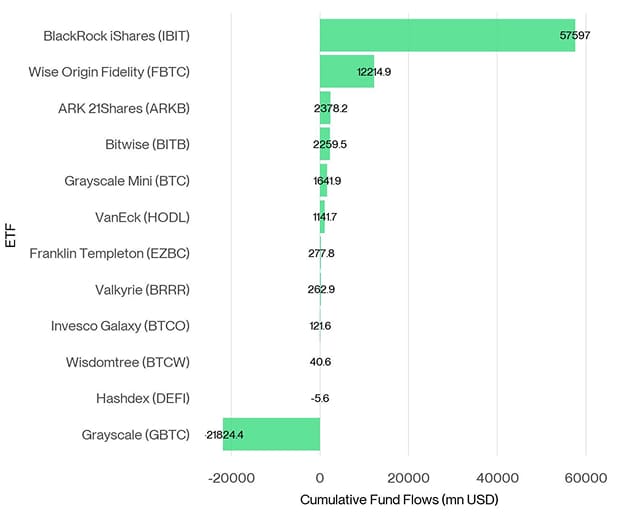 Source: Bloomberg, Fund flows since traiding launch on 11/01/24; data subject to change
US Spot Bitcoin ETFs: 5-days flow
Source: Bloomberg, Fund flows since traiding launch on 11/01/24; data subject to change
US Spot Bitcoin ETFs: 5-days flow
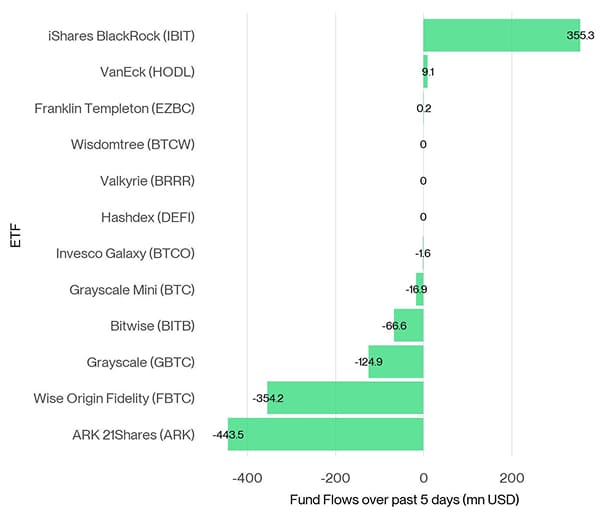 Source: Bloomber; data subject to change
US Bitcoin ETFs: Net Fund Flows since 11th Jan mn USD
Source: Bloomber; data subject to change
US Bitcoin ETFs: Net Fund Flows since 11th Jan mn USD
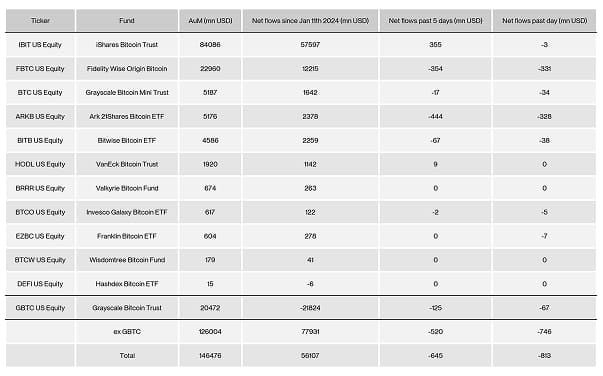 Source: Bloomberg, Bitwise Europe; data as of 01-08-2025
US Spot Ethereum ETF Fund Flows
Source: Bloomberg, Bitwise Europe; data as of 01-08-2025
US Spot Ethereum ETF Fund Flows
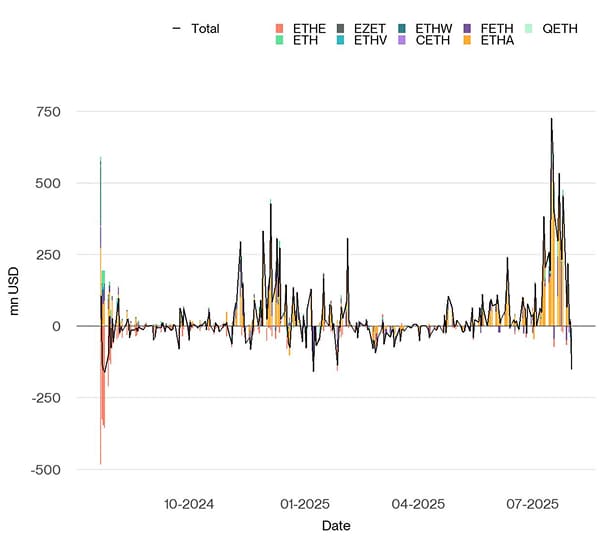 Source: Bloomberg, Bitwise Europe; data subject to change
US Spot Ethereum ETFs: Flows since launch
Source: Bloomberg, Bitwise Europe; data subject to change
US Spot Ethereum ETFs: Flows since launch
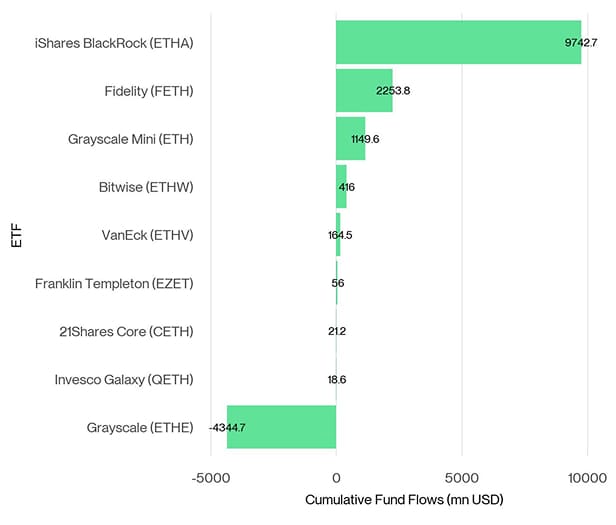 Source: Bloomberg, Fund flows since trading launch on 23/07/24; data subject on change
US Spot Ethereum ETFs: 5-days flow
Source: Bloomberg, Fund flows since trading launch on 23/07/24; data subject on change
US Spot Ethereum ETFs: 5-days flow
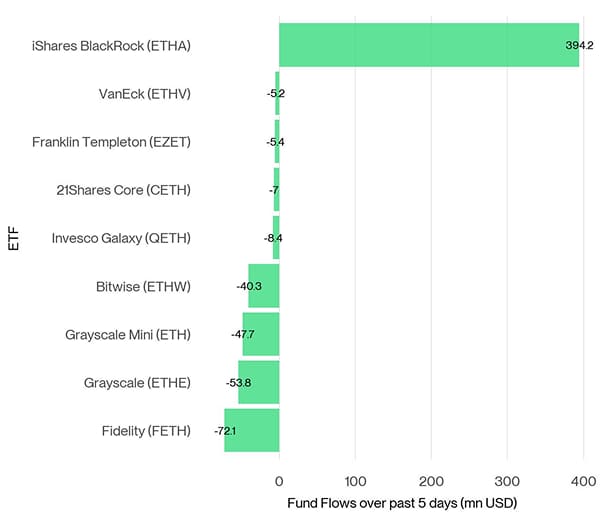 Source: Bloomberg; data subject on change
US Ethereum ETFs: Net Fund Flows since 23rd July
Source: Bloomberg; data subject on change
US Ethereum ETFs: Net Fund Flows since 23rd July
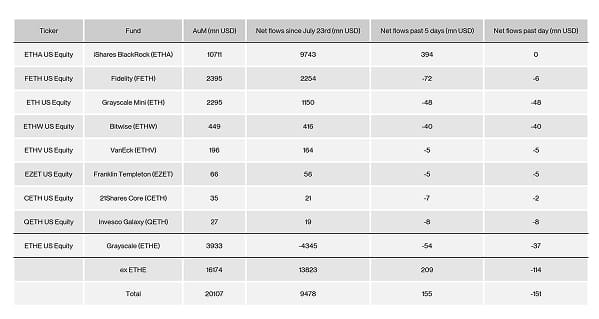 Source: Bloomberg, Bitwise Europe; data as of 01-08-2025
Bitcoin vs Crypto Hedge Fund Beta
Source: Bloomberg, Bitwise Europe; data as of 01-08-2025
Bitcoin vs Crypto Hedge Fund Beta
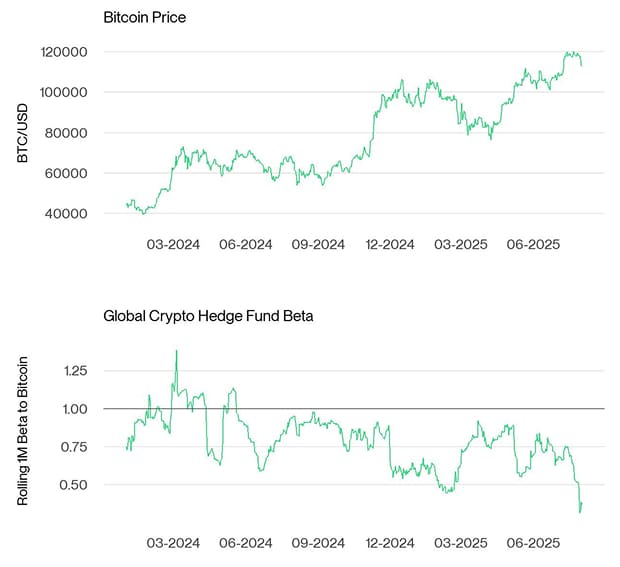 Source: Glassnode, Bloomberg, NilssonHedge, Bitwise Europe
Altseason Index
Source: Glassnode, Bloomberg, NilssonHedge, Bitwise Europe
Altseason Index
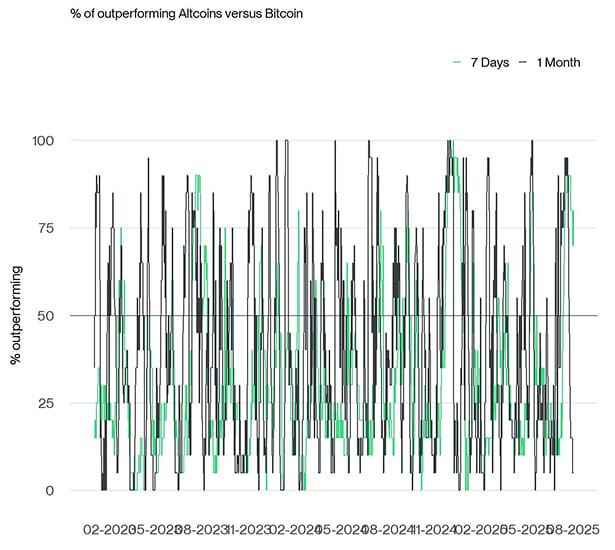 Source: Coinmetrics, Bitwise Europe
Bitcoin vs Crypto Dispersion Index
Source: Coinmetrics, Bitwise Europe
Bitcoin vs Crypto Dispersion Index
 Source: Coinmarketcap, Bitwise Europe; Dispersion = (1 - Average Altcoin Correlation with Bitcoin)
Bitcoin Price vs Futures Basis Rate
Source: Coinmarketcap, Bitwise Europe; Dispersion = (1 - Average Altcoin Correlation with Bitcoin)
Bitcoin Price vs Futures Basis Rate
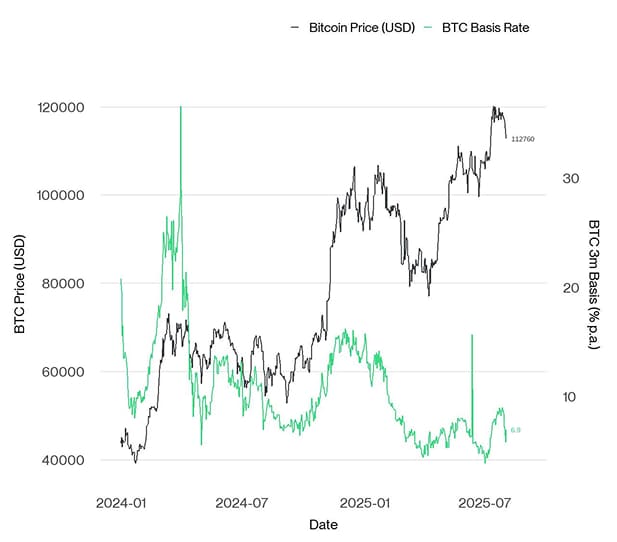 Source: Glassnode, Bitwise Europe; data as of 2025-08-02
Ethereum Price vs Futures Basis Rate
Source: Glassnode, Bitwise Europe; data as of 2025-08-02
Ethereum Price vs Futures Basis Rate
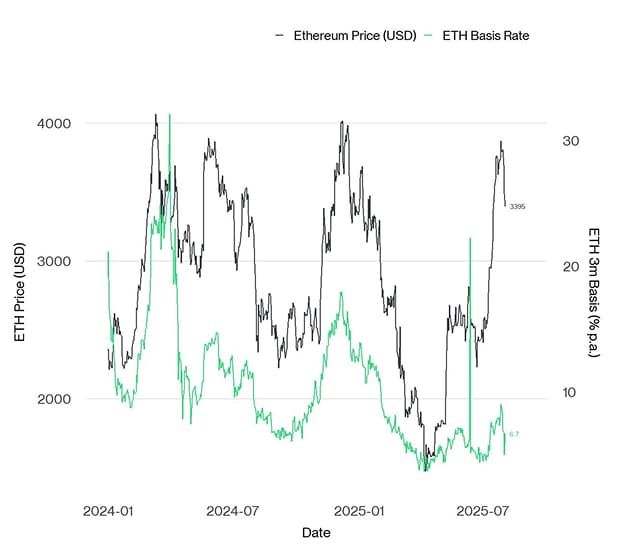 Source: Glassnode, Bitwise Europe; data as of 2025-08-02
BTC Net Exchange Volume by Size
Source: Glassnode, Bitwise Europe; data as of 2025-08-02
BTC Net Exchange Volume by Size
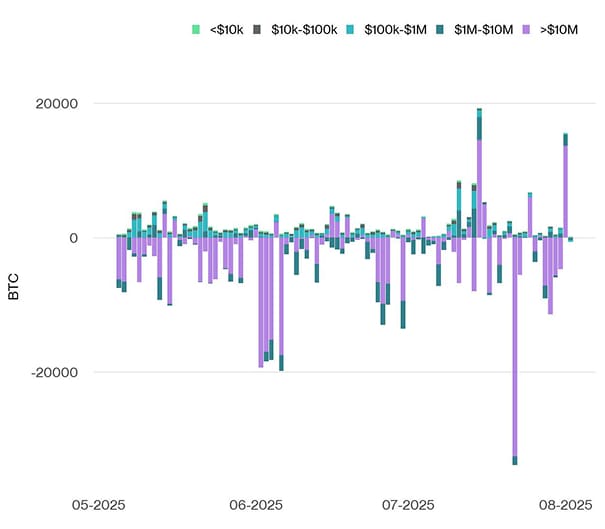 Source: Glassnode, Bitwise Europe
Source: Glassnode, Bitwise Europe
Important information:
This article does not constitute investment advice, nor does it constitute an offer or solicitation to buy financial products. This article is for general informational purposes only, and there is no explicit or implicit assurance or guarantee regarding the fairness, accuracy, completeness, or correctness of this article or the opinions contained therein. It is advised not to rely on the fairness, accuracy, completeness, or correctness of this article or the opinions contained therein. Please note that this article is neither investment advice nor an offer or solicitation to acquire financial products or cryptocurrencies.
Before investing in crypto ETPs, potentional investors should consider the following:
Potential investors should seek independent advice and consider relevant information contained in the base prospectus and the final terms for the ETPs, especially the risk factors mentioned therein. The invested capital is at risk, and losses up to the amount invested are possible. The product is subject to inherent counterparty risk with respect to the issuer of the ETPs and may incur losses up to a total loss if the issuer fails to fulfill its contractual obligations. The legal structure of ETPs is equivalent to that of a debt security. ETPs are treated like other securities.
